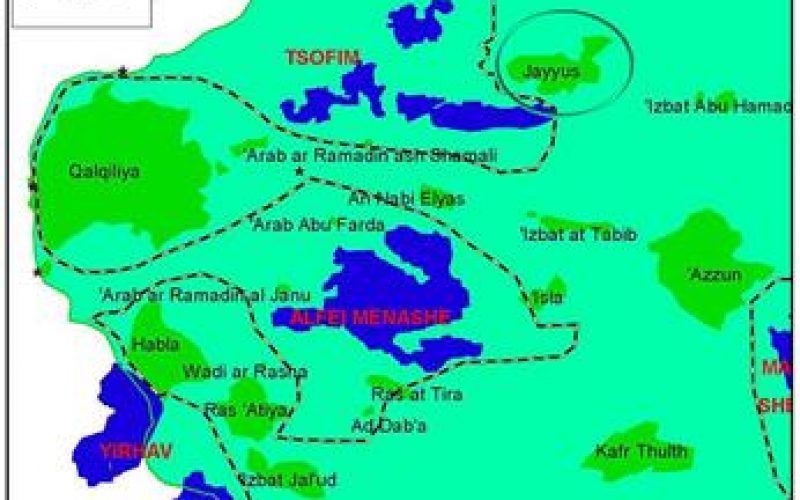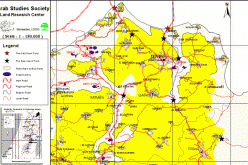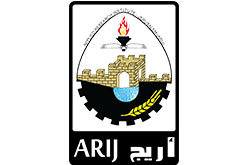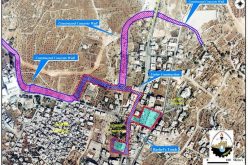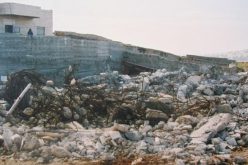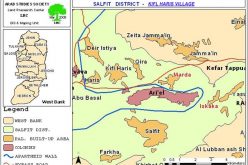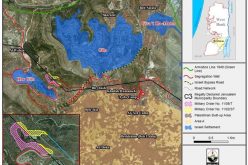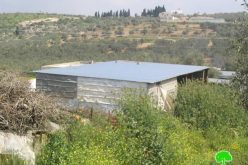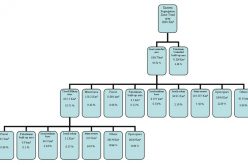- Location: the village of Jayyus is located 8 km to the east of Qalqiliyia city.
- Population: the population of Jayyus is about 3200 inhabitants, comprised of 550 nucleus families who mostly depend on agriculture, particularly irrigated agriculture. There are 3 artisan wells which were exclusively used by the village farmers, and 3 others jointly used with the neighboring village of Falamiya and Qalqiliay city.
- Village area: the village total area is 12500 dunums.
The village and the Wall:
In the middle of September, 2002, the Israeli so- called civil administration distributed military orders informing the villagers of the Israeli intent to construct the Segregation Wall on their land. Actual works started ten days later, specifically on the 25th of September 2002, giving land owners no enough time for legal objection.
The Wall path was constructed on the following sites of Jayyus land: Al Muntar, Al Wadat, Al Khalail and Al Firihat. The total area of land destroyed by the erection of the Segregation Wall path is estimated at 550 dunums of land. At the same time, an additional 8600 dunums of land were separated from the village.
Number of trees uprooted by the construction of the Segregation Wall pathis400 olive trees and 1000 almond trees.
Location of village from the Wall: the village is located only 200 meters from the village homes. The Wall travels 5.5 km in the village land with a width of 100 meter.
Distance of Wall from the Green Line: the Wall is about 6 km away from the Green Line.
The separated zone: the Wall separated the following sites: Bubak, Al Moruj and Al Sutuh. All the village lands located between the village and Segregation Wall in the aforementioned sites was segregated from its owners. The total area of land separated is estimated at 8600 dunums, according to the village local council, the land is divided as follows:
- 3000 dunums cultivated with about 21000 olive tree;
- 1500 dunums cultivated with about 3000 citrus and fruit tree;
- 500 dunums of irrigated land cultivated with vegetable.
- 6 artisan wells are located inside the segregated land, three of which are jointly owned with the neighboring village of Falamiya and the city of Qalqiliyia.
- The rest of land has been used as grazing land.
Economic and social effects of Segregation Wall construction on local inhabitants:
According to the village local council, the village inhabitants are inflicted by the following economic losses:
1. The devastation of 550 dunums of land for the erection of the Segregation wall. During this process about 400 olive tree and 1000 almond tree were uprooted. The 400 olive tree produce about 6 tons of pure oil per year.
2. In the separated land, the following losses were inflicted:
- Irrigated vegetables: 5000 tons per year;
- Olives: 330 tons of pure olive oil per year;
- Citrus and fruits: 300 tons per year.
4. 550 family lost their lands or part of their lands due to the construction of the Segregation Wall path in the village
5. 300 family lost their lands in the separated zone.
6. 180 family heads have lost their jobs inside Israel due to the closure and construction of the Segregation Wall.
7. The above mentioned losses and constraints affect the inhabitants psychologically and socially and contribute to the aggravation of poverty and misery.
Prepared by
The Land Research Center – Jerusalem
LRC


